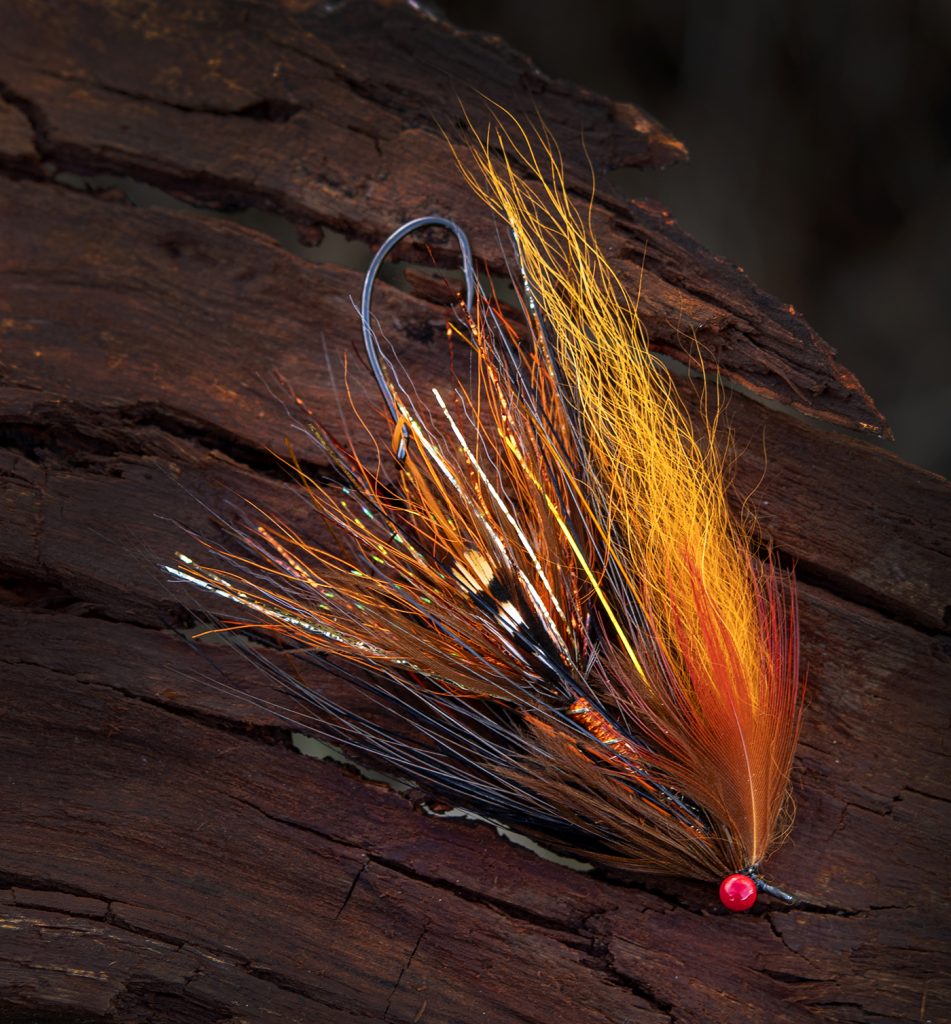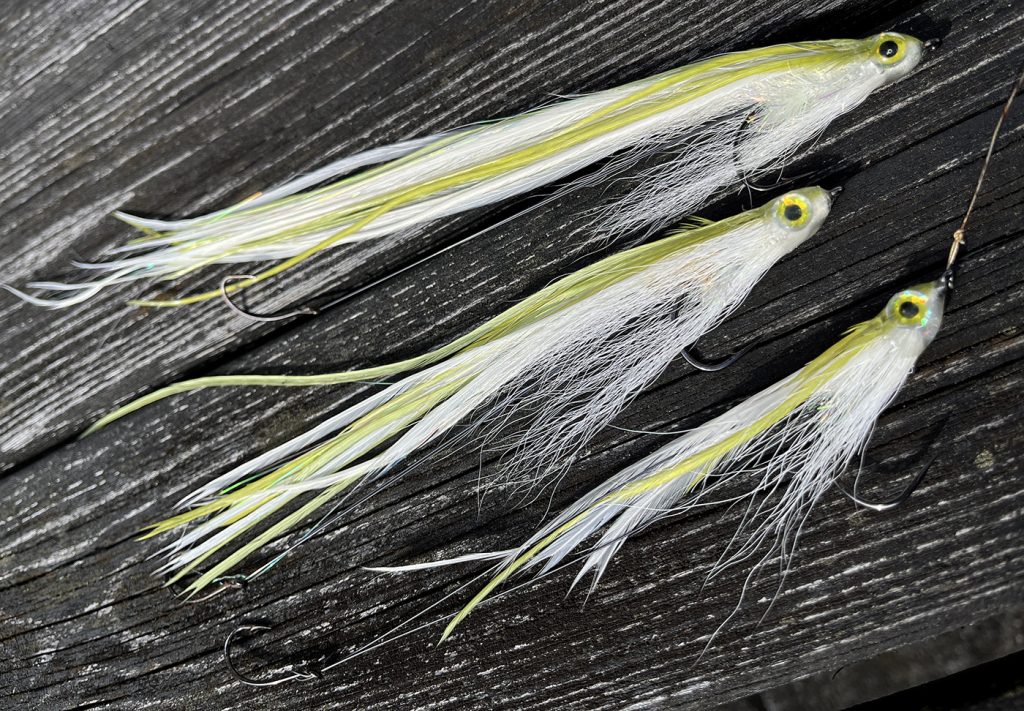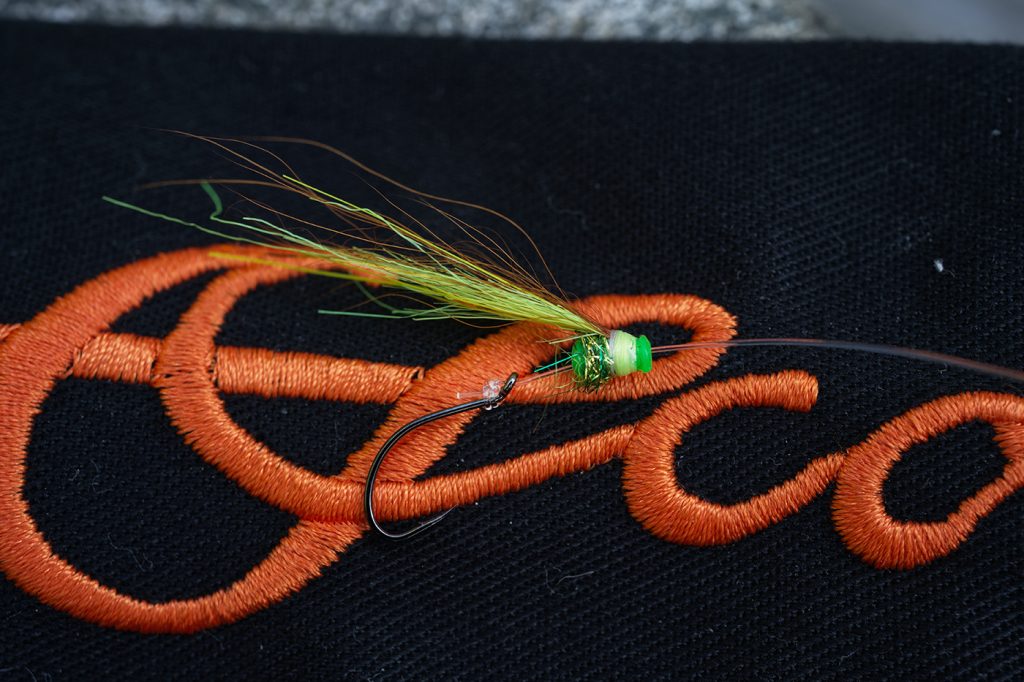
Not the missile – at all, but a hook. A stinger hook is defined by it’s shape (as most hooks), it’s placement in the fly and the way it’s attached to the hook. Stinger hooks are short, have a fairly deep bend and are up-eyed. The up-eye is important and I’ll get back to that. Stinger hooks can be used a different ways. They can be the one hook and a fly or they can be used as a two-hook-setup, most commonly on long flies.
They have two things in common. They are rarely tied on, although it’s certainly possible. I sometimes dress a stinger hook when I use them on rag worm imitations and they can be integrated as part of the tail on sand eel imitations. The other common denominator is that the straight shank and the up-eye.

Although rarely tied on, it’s certainly not a bad hook to use for smaller imitations. Here’s a beautiful scud imitation by Agne Sjöberg.
On a long sand eel imitation, a stinger hook can be placed far back, at the tip of the wing. Sand eels move fast and imitations should be fished fast. That is sometimes a certain recipe for short takes, where the fish grabs the fly by the tail or simply nibbles at it. A stinger hook will often lead to a hooked fish, when they are acting up like that. You can always argue against the use of two hook and sometimes I can happen that a fish is hooked on the outside of the mouth or the gill plate

Big sand eels for barracudas. Fresh out of the vise at the top, slightly used in the middle and smashed by a angry feathereating barracuda… Note the small stinger hook placed where the wing ends. That will often save you, when the fish are taking “short”.
They are probably most commonly used today on Intruder style flies, where they are placed in a wire loop to put the hook further back on the often big flies. That’s one advantage in itself, but another great advantage is that the hook can be replaced if damaged.

A typical Intruder style fly by Alex Belonga. The trailer hook is placed in a wire loop, which does two things. It pushed the hook back and ensures that the hook can be changed.
Tube flies are the norm for salmon and sea trout flies in Scandinavia. For that purpose we of course recommend our Home Run Tube Single HR430/HR431, which is a dedicated tube fly single hook. But it “only” comes down to a size 8. Tube flies don’t have to be big, they are in fact quite effective when tied really small and when fishing really small tubes, an HR 430 size 8 is a big hook. For the really smal tube flies I recommend our Nordic Series Trailer Hook NS182. It comes down to a size 12, which fits even the small tube flies.
We also have stinger in the Home Run line, although here called the Home Run Trailer Hook HR482/HR483, but the purpose is the same. Getting a hook far back in the fly. The main difference between the two is the wire gauge, the HR 483/483 being significantly heavier and stronger. The HR 482/483 comes in size 2-8.
A little hack can quickly and easily place a stinger or trailer hook far back in a normal tube fly where you’d otherwise fix the hook in the tube. Slide the tube on the leader as you’d normally do. Rather than tying the hook on with a Blood Knot or a Turtle Knot, place the hook in a loop, adjust the size of the loop to place the hook as far back as needed. The loop knot will stop the tube sliding back to the hook.

Big tube flies are effective when the water is high and cold. In cold water, even big salmon can “take short”. Placing an HR 482/483 in a loop places the hook further back than if “just” fixed in the tube as you’d normal do.
The reason for the up-eye-design is simply that when looped on the wire of an Intruder style fly, the up-eye ensures that the hook sits in line with the wire and shank. You can of course tie an HR 482 or NS 182 on with a standard know, but a Turle Knot is the optimal know to use, because it bites on the shank of the hook, rather than the eye. This serves the same purpose, it places the hook in line with the rest of the fly.

The smallest HR 430/431 would be too big for the fly, but an NS 182 size 12 fits well. By tying on the hook with a Turle Knot, it will always sit in line with the leader and fly.
Offcourse we have had some tiers behind the vise in our studio demonstrating flies using stingerhooks – have a look at two of them here. The first is a String Leech by Allan Overgaard and a Chartreuse Sand Eel by Mathias “Tuben” Ibsen.
